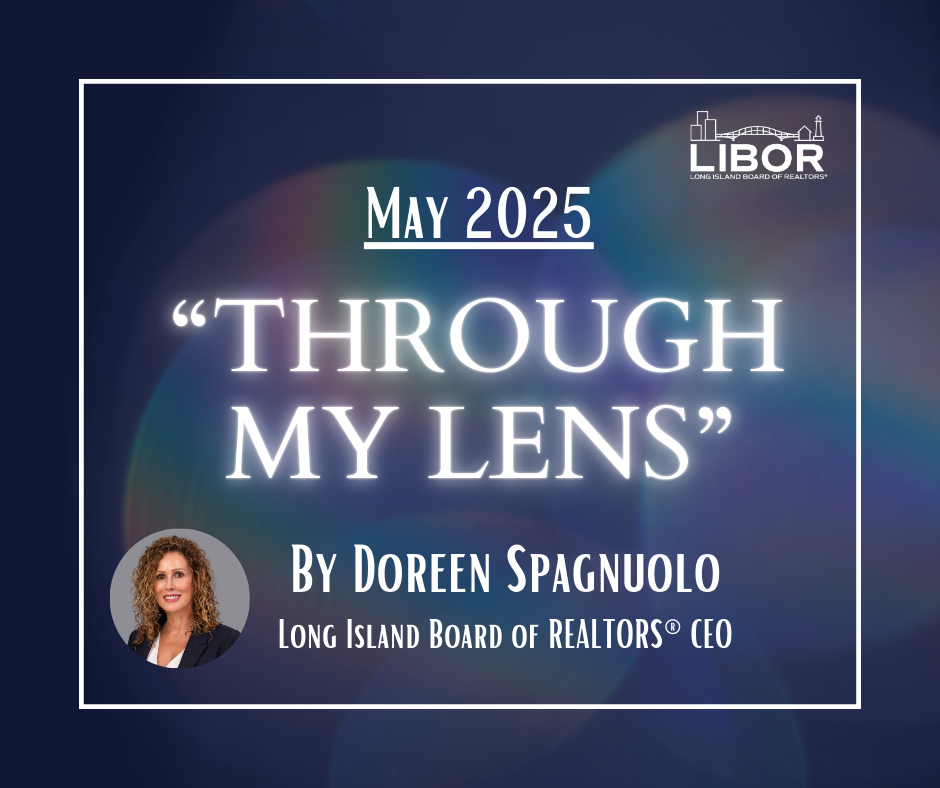Through My Lens

Changed by Change
by Doreen Spagnuolo, LIBOR CEO
Change can make us feel uneasy or even anxious, and we've been through a lot of uncertainty since the Covid-19 pandemic. Plus, the rapid pace of technological advances has added to that sense of unease. Our real estate industry has seen significant changes, too. In the past, seasonal cycles, demographic trends, and long-term low interest rates made the market somewhat predictable. However, high inflation, rising interest rates from the Federal Reserve, and a housing shortage have made the future much harder to foresee. To top it off, new rules from the National Association of REALTORS® settlement and the changes to the way we must work have added even more uncertainty.
It may feel tempting to sit back to see what happens next, but successful professionals don't do that. While it might sound like a cliché to say that strong leaders embrace change, they certainly don't run from it. Let's look at what we know for sure and some trends that give us reason to be hopeful.
In September, the Federal Reserve cut interest rates by 50 basis points, indicating inflation might be cooling down. If this trend continues, more cuts could follow. On a global scale, the European Central Bank also lowered rates in October for the third time this year. In the U.S., mortgage rates, which the Fed doesn't directly control, have gone up since August but may only be doing so temporarily.
According to Lawrence Yun, Chief Economist at the National Association of REALTORS®, the 30-year mortgage rate of 6% has become the "new normal." While the 3-5% mortgage rates of the past decade and the recent sharp rise in rates since 2022 may be foremost in our minds, Yun reminds us that the U.S. average for a 30-year mortgage has historically been around 7%. While those low 3-5% rates are unlikely to return, life moves on. Even those with 3% mortgages might still want to downsize, families with growing kids will need more space, and young couples will eventually tire of paying rising rents without building equity.
In September, the U.S. saw strong job gains, and the labor market is still going strong. Retail sales also grew in September. While this may slow down further rate cuts, there's no sign of a major national recession. More jobs, higher wages, and an increase in available homes (up 22.7% this year) should lead to more demand in real estate.
These are things we know, and these trends point to better times ahead. We also know that the way we do business has changed. The new rules are here to stay and understanding how to follow them effectively is crucial for achieving continued business success.
Successful REALTORS® are adapting. They are sharpening their negotiation and communication skills, redefining their value propositions, and unhesitatingly asserting the value of their services to buyers and sellers. They are taking advantage of LIBOR’s resources and tools to communicate with consumers to do so. They plan to attend upcoming LIBOR sessions such as these:
- 11/4 Leigh Brown Ethics Day on using the Code of Ethics to help your buyers and sellers understand the value of a REALTOR®
- 11/5 OneKey® MLS: Understanding & Embracing Industry Changes - Working In a New Reality
- 11/5 Buyer Confusion in a Transitioning Market
- 11/6-7 Accredited Buyer Representative (ABR®) NAR designation course
I encourage you to be one of our engaged members who use uniquely LIBOR benefits such as these to increase your success as we head into 2025.
Latest News
-

May 6, 2025
Through My Lens
-

Apr 16, 2025
Through My Lens


